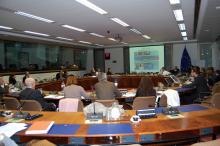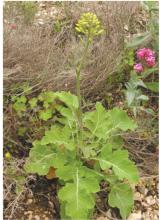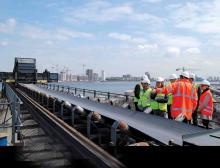
Safety, along with productivity and cost-efficiency, is what is driving minerals processing and aggregate production today. Indeed, as raw materials and other resources become scarcer, plants look for new ways to be more efficient with energy use and operations.
“Safety is a high priority, and having zero accidents is every plant’s goal. Automation removes operators from the vicinity of the machines to the safe control room environment. The level of safety is increased through better information distribution,” says Metso.
Slips, trips and falls along with transport and manual handling are often listed as the main causes of accidents in quarries, and there are many safety initiatives that have helped to reduce such incidents.
Many such injuries happen when quarry operatives have to interact with machinery, and according to Metso by enabling better process control and visibility, an advanced automation system keeps processes running smoothly, and safely.
Accurate online measurement information and diagnostics show how the machines and the plant are working; a single piece of data can make or break the process. For example, condition monitoring solutions installed on large machines enable preventive maintenance and help avoid costly unplanned downtime, resulting in better machine reliability and availability and better HSE (health, safety and environment) and capacity increase.
“You have to measure a process in order to control it. Plant stability is the key to good overall capacity, high-quality end products and safe operation,” says Kari Heikkilä, Director, Minerals Processing Systems, Automation, Metso.
“Automation also helps with the shortage of skilled mining employees. As plants are often far from urban areas, recruiting staff can be difficult. Automation reduces the need for experts, thus lowering costs. Remotely operated machinery can be run from a faraway location.”
According to Heikkilä, Metso is currently developing solutions that will embed automation even further within the machines, enabling them to intelligently communicate with each other, and further research from companies also involved in the sector will see further developments in automation.
Today, quarries often have central control rooms from which crushing and screening operations can be supervised, allowing operators to see what is happening in the plant but from a distance, while information about problems is quickly relayed to the control centre, and thus action can be taken to avoid any further problems.
Indeed, many mobile crushing and screening manufacturers now offer radio remote control equipment for operations and this allows for a quick shutdown if a problem is encountered.
And to reinforce such moves, the European minerals foundation Forum, together with a whole range of extractive industry associations, held an event on Working Together for Accident Prevention in Brussels, Belgium, late last year, hosted by the European Economic and Social Committee (EESC).
Armindo Silva, The
the EU.
He said that employment and safety need to go hand-in-hand and he welcomed this particular initiative of two industrial sectors to create new safety standards.
Policy issues such as eliminating illegal extraction and imports of sub-standard machinery, as well as permitting standards and technical machinery standards were discussed, and the importance of standardisation was highlighted by several participants.
In the context of the EU’s policy for innovation and reindustrialisation it was highlighted that standardisation can assist to raise safety standards, but that EU competitiveness is not achieved by cementing existing technology, but developing new ones.
Both extractive industry and machinery producers agreed on closer cooperation in achieving higher, but cost-effective technical solutions and increased safety standards when it comes to the interface between man and machine.
Both sectors felt that in the context of the EU’s Innovation Partnership on Raw Materials and the Horizon 2020, opportunities will arise to develop cooperation programmes such as the UK Safer by Design model and to enlarge it to European scale.









